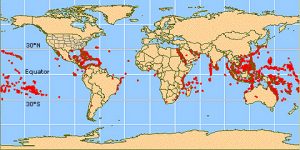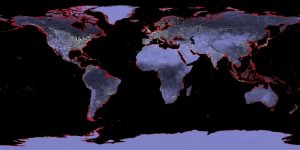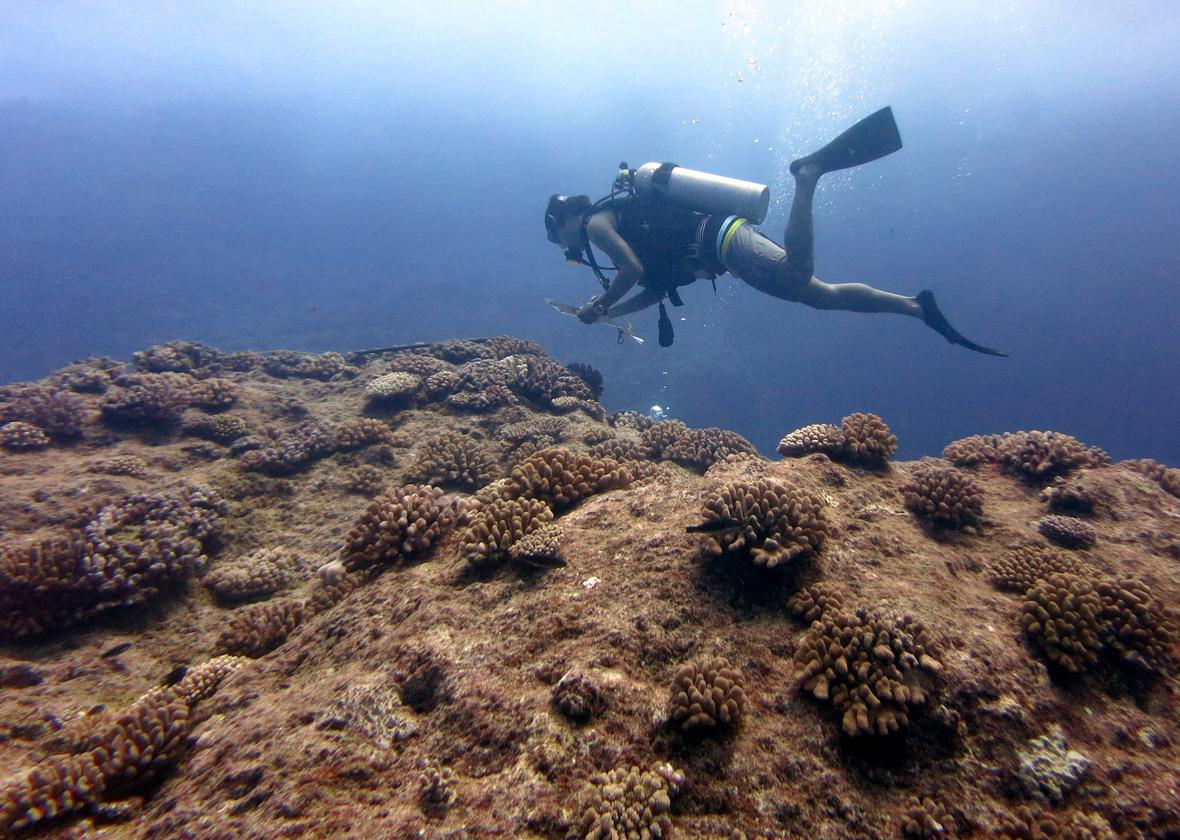37
The People and the Location
Native peoples living near coral reefs have been displaced for centuries for many reasons some including tourism, agriculture, and conquering of land. Today, nearly 40% of the world’s 6,000-8,000 indigenous groups encompass coastal ocean and island regions within their homelands, territories, and nations.
Below is a list of some native populations that live/lived near reefs around the world
- The Ciboney and Carib peoples from mainland America inhabited some land the West Indies.
- Giraavaru people were the ancient owners and rulers of the Maldives.
- The Taíno were an Arawak people who were the indigenous people of the Caribbean and Florida.
- Aboriginal people and Torres Strait Islander people belong to Australia and are connected with the Great Barrier Reef.
- Sentinelese people an indigenous people who inhabit North Sentinel Island in the Bay of Bengal in India. They are considered one of the world’s last uncontacted peoples.
- The many tribes of Papuans living on Papua New Guinea.
- Malagasy people of Madagascar make up many different groups.
Below is a map of coral building reefs around the world. As seen they are located along the tropics where high densities of human populations live.

“Reef building corals” by National Oceanic and Atmospheric Administration licensed under [public domain]
Climate Change Threats
Many inescapable threats besides displacement affect indigenous cultures today. One heavily discussed is Climate Change. Climate change is impacting many indigenous communities by endangering sacred and traditional living sites, cultural practices, local forests and ecosystems, traditional foods and water quality. In response to this crisis, scientists in the US are attempting to work with coastal communities to study the impacts of climate change on the health and vitality of the social, economic and natural systems of these communities.
As climate change affects coral reefs intensely, these impacts influence the people that live near and depend on these ecosystems. Two studies in Hawai`i are exploring climate change impacts on coral reefs and in particular the flooding of coastal communities from rising sea water levels. It is agreed widely by scientists that climate change poses the greatest long-term threat to coral reefs and among other impacts, climate change is expected to result in more frequent severe tropical storms and severe coral bleaching events. Coral bleaching is caused by environmental stress from warm water which causes corals to expel their symbiotic algae from their tissues, turn white and eventually the afflicted coral may die. Threats from increasing storms, rising sea level and direct effects of ocean warming will continue to have devastating impacts on coastal ecosystems and their human communities.

“6M Sea Level Rise” by NASA under [public domain]
Indigenous Solutions
Scientists, along with members of Washington State’s Swinomish Indian Tribal Community, are addressing climate change threats to the Tribe’s land, wildlife, culture and community health. As sea levels rise, coastal erosion intensifies which lead to many negative side affects on land and in the ocean. One important part of preparing for climate change is identifying a full range of potential impacts from declining natural resources such as fish, to damaged infrastructure such as roads and buildings, to compromised community health. The Swinomish fishing tribe in Seattle WA are taking action to build community resilience by implementing the Swinomish Climate Change Initiative. With funding from the Northwest Climate Science Center and the North Pacific Landscape Conservation Cooperative, the Swinomish have conducted a pioneering study to combine assessments of ecological health with newly developed community health indicators to identify priority adaptation tactics. For more information watch a webinar about the project here. Other funding has been granted towards these areas such as from the Interior Department which recently claimed to make $8 million available to fund projects that promote tribal climate change adaptation and ocean and coastal management planning through its Tribal Climate Resilience Program.
On the island of Maui scientists are developing a tool to help coral reef managers make science-based decisions; this tool can map, assess, value and simulate changes in the coral reef ecosystems under different climate change scenarios. Hawai`i’s coral reefs provide seafood, areas for recreation and tourism, coastal protection and support the traditional lifestyles and values of the state’s native cultures. The research will show potential climate change impacts and help land and coastal managers make informed decisions to create resilient coral reefs and coastal communities.

The Battle of Good VS Good
Traditionally native peoples were displaced due to other nations conquering the land and many now assume it is all over. Unfortunately, this problem still occurs today with a strange and complicated twist. Many indigenous people are being pushed out of their homes in the name of conservation because governments can acquire money for conservation projects like setting aside land. When the economic priority is to generate revenue from conservation, humans get pushed away from the protected areas so they can become “protected for nature”. Most of the world’s 6,000 national parks and 100,000 protected places have been created by the removal of tribal peoples. Hundreds more parks are being created every year as countries commit to meeting the UN’s goal to protect 17% of land by 2020. And the human toll is rising accordingly.

Resist tug of war: by author unknown via Pixabay, July 9, 2019. [Simplified Pixabay License].
Popular Books Written on this Topic
Conservation Refugees: The Hundred-Year Conflict Between Global Conservation and Native Peoples by Dowie, Mark
Asserting Native Resilience: Pacific Rim Indigenous Nations Face the Climate Crisis by Grossman, Zoltan
Braiding Sweetgrass: Indigenous Wisdom, Scientific Knowledge, and the Teachings of Plants by Kimmerer, Robin Wall
Misc. Resources
- MinorityRights.org provides information on indigenous peoples in all countries and regions on the world.
- Reefbase.org is a coral reef database full of information open to all
The information in this chapter in thanks to content contributions by Audrey Boraski.
